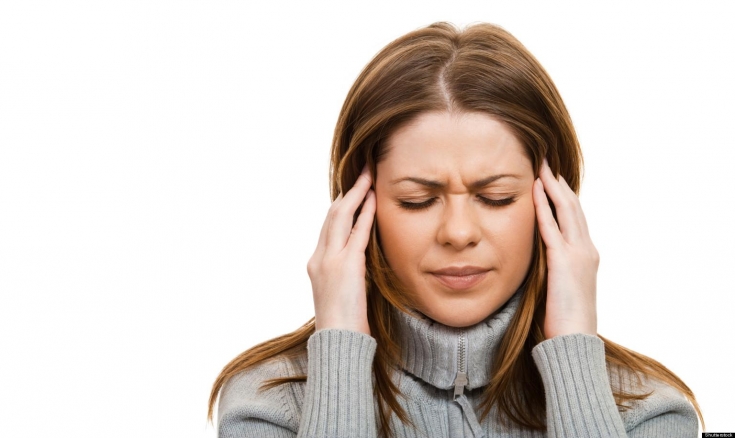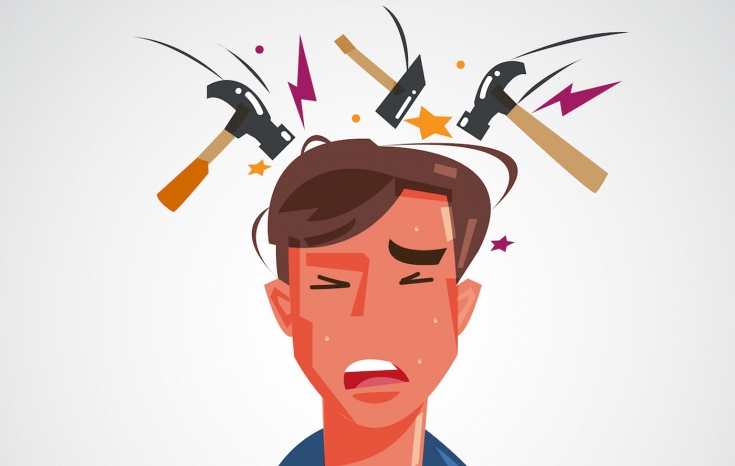Botulinum toxin type A is known as one of the best studied drugs for the preventive treatment of various types of primary headaches. Neurologists appreciate it for its localized effect, the possibility of injecting it into any available muscle, safety, good tolerance to treatment, and adherence of patients who, for a number of reasons, do not want to adhere to long-term medication courses.
In recent years, there has been a high interest in the problem of chronic pain. Due to the limited possibilities of traditional medical methods of treatment and the high frequency of side effects of the drugs used, the dissatisfaction of many patients with the results of treatment, often the unwillingness to take pills regularly, given the long duration of course treatment (up to six months or more), the search for new therapeutic and surgical approaches to treatment is relevant. chronic pain.
One of the fundamentally new directions among therapeutic methods is the use of botulinum toxin type A preparations.
Mechanism of action of botulinum toxin
Botulinum toxin – it is a protein that is a potential neurotoxin and is produced by the anaerobic bacteria Clostridium botulinum. In high doses, botulinum toxin can cause diffuse muscle paralysis, vegetative disorders with a possible fatal outcome, which is observed in botulism. However, the toxin administered in the form of a drug in very low doses into individual muscles or local skin areas, is a unique tool for the treatment of various motor and autonomic disorders, as well as the correction of facial wrinkles.
In 2000, the global neurological community named botulinum toxin the "mysterious molecule of the century" due to its effective use in the treatment of a wide variety of diseases in recent decades and, probably, at the same time recalling the thousand-year history of fighting it.
There are 8 known serological subtypes of botulinum toxin (A, B, C1, C2, D, E, F, G).
Serotypes A, B, E, F and G can cause botulism in humans, but type A toxin is the most powerful. Therefore, botulinum toxin type A (BTA) – the first and most widely used serotype in clinical practice.
The main point of the BTA application – presynaptic terminals of cholinergic synapses, including neuromuscular ones. At the injection site, the toxin blocks the release of acetylcholine from presynaptic axon terminals by cleaving synaptosomal transport proteins (type A blocks SNAP25) and causes dose-dependent local muscle relaxation.
The process of presynaptic cleavage of transport proteins by botulinum toxin is irreversible and takes an average of 30-60 minutes, and myorelaxation occurs in a few days. 1–2 months after the injection, new terminals begin to grow from blocked axons and new functionally active synapses (sprouting) are formed, and the original synapse is also gradually restored. This explains the reversibility of the therapeutic effect of BTA injections after 2-6 months. The full end of the effect occurs when the neuromuscular transmission is restored and sprouting stops.
Botulinum toxin use for pain
The locality of BTA action, the possibility of injection into any available muscle, good treatment tolerance, safety, absence of systemic side effects and long duration of action, proven on the basis of rigorous scientific studies, determine the therapeutic value of botulinum toxin.
Today, more than 100 potential indications for the therapeutic use of BTA are known.

Hundreds of scientific articles and guidelines have been published on the clinical use of botulinum toxin, mainly in the treatment of diseases and conditions with increased tone or spasm of skeletal and smooth muscles. The most studied use of BTA in focal dystonia, spasticity, cerebral palsy, hyperhidrosis, hyperfunctional mimic wrinkles.
Although BTA was originally used for diseases that manifested by increased muscle tone, its analgesic effect has been noted for a long time. In many patients, the analgesic effect appears earlier and lasts longer than the effect on muscle hyperactivity. Pain reduction can be observed even in the absence of a muscle relaxant effect.
Recent studies have shown the effectiveness of BTA in a variety of pain syndromes, including various types of primary headaches, back pain, whiplash pain; injuries, myofascial pain syndromes, myogenic dysfunction of the temporomandibular joint, chronic pain in large joints (intra-articular injection of BTA), with local alopecia syndrome with cephalgia (cephalalgic alopecia areata), secondary headaches with cervical and cranial dystonia, trigeminal and postherpetic neuralgia, chronic facial pain with hyperactivity of the masticatory muscles, chronic pelvic pain in women with spasm of the pelvic floor muscles, etc. The nature of the analgesic effect of BTA in pain syndromes remains not completely clear.
Mechanisms of action of BTA
1) Weakening of prolonged muscle contraction of the muscles in the injection zone BTA leads to decompression of the afferent endings of muscle nociceptors (pain receptors) and muscle blood vessels; the release of various substances leading to sensitization of muscle nociceptors is reduced.
As a result, the muscle triggers of pain attacks are eliminated – local painful muscle areas, "working" as permanent or potential seizure triggers. This mechanism is very important, especially for such a common chronic disease as migraine, since constant excessive impulses from the pericranial muscles (muscle stress) are now considered one of the provoking factors for headache attacks, along with known sensory stimuli (noise, light, smells).
2) Decrease (normalization) of the activity of muscle spindles while eliminating excessive muscle contraction and, as an indirect consequence, a decrease in pain. At the same time, a change in the activity of supraspinal projections of muscle spindle afferents leads to a change in the activity of sensory systems at the CNS level. This mechanism is discussed as a manifestation of CNS neuroplasticity in response to "damage" afferent input.
3) Retrograde transport of BTA and/or its metabolites in the CNS. Experiments on animal models show modulation of the release of methionine–enkephalin–like substances in the striatum, substance P and enkephalin in the spinal cord and raphe nuclei ( in vitro) and glutamate (in vivo).
4) Suppressing the release of not only acetylcholine, but also other neurotransmitters such as CGRP, substance P, which allows modulation of the sensory afferent flow.
5) Suppression of neurogenic inflammation – an important factor in the pathogenesis of pain syndromes.

Thus, the local injection of botulinum toxin type A leads to prolonged muscle relaxation, the pathological chain is broken - “muscle spasm–pain– spasm”. When the muscle relaxes, the activation of peripheral nociceptors and, accordingly, impulses along the pain C– fibers and Ad– fibers stop, which leads to a decrease in the hyperexcitability of peripheral nociceptive neurons in the trigeminal ganglion or spinal ganglia, thus affecting peripheral sensitization.
With muscle relaxation, the afferent flow from the muscle spindles along the non-pain sensitive Ab– fibers also decreases. Such a decrease in afferent flow along pain and non-pain sensory fibers leads to a decrease in the excitability of neurons in the trigeminal nucleus (headaches and facial pains) or the dorsal horns of the spinal cord and nuclei of the thin and sphenoid bundles of the medulla oblongata (somatic pain syndromes), thus affecting central sensitization.
That is, as a result of ultra-long muscle relaxation, BTA indirectly affects the state of peripheral and central nociceptive systems.
The use of BTA for headache
Headaches are one of the most common reasons for seeking medical attention. The first question that needs to be resolved by the doctor is: is the headache primary, secondary (symptomatic), or is it mixed?
Only in 8% of patients headaches are caused by severe organic diseases, often life-threatening: tumor, aneurysm, traumatic brain injury, infection, and others.
In the vast majority of cases, patients suffer from primary headaches – diseases not associated with structural lesions or systemic diseases of the nervous system, the main clinical manifestation of which is headache (HA). According to the International Classification of Headaches 2004, these include migraine, tension headache, cluster headache and other trigeminal autonomic (autonomous) cephalalgia, as well as other rare primary headaches. The most common forms of primary headaches are migraine and tension-type headache (THT).
The history of the use of BTA for the treatment of headaches begins with aesthetic medicine. In 1992, plastic surgeon William Binder first drew attention to the regression of headaches in patients who were injected with BTA to correct mimic wrinkles. It was the start of a new direction in the therapeutic use of BTA – headache treatment. For medicine, such a case is unique, when initially ”neurological” the drug, which eventually became popular as a highly effective means of aesthetic medicine, “returned” in neurology with new indications for its use.
For the treatment of headaches, botulinum toxin type A preparations are usually injected into the m. Procerus, bilaterally in mm. Frontalis, Corrugator supercilii, Temporalis, Occipitalis and rarely mm. Trapezius, Splenius capitis, Sternocleido¬mastoideus.
Two methods are used:
- “fixed points”;
- “following the pain” ("follow the pain"), when the choice of points for injection depends on the localization of pain or muscle tension.
Sometimes a combination of techniques is used. The choice of technique depends on the patient's complaints and medical examination data. Method “fixed points” more often used for migraine, and the technique of "following the pain" – for tension headaches and chronic migraine, both approaches are used for mixed headaches.
BTA preparations are diluted with sterile saline according to the standard method. The prepared solution is injected with a syringe with a needle with a diameter of 0.3 cm. For injections into the face, head and neck, it is better to use syringes with non-removable needles. The total dose of BTA is always determined individually and depends on the type of headache, the severity of the symptoms, the size of the body, the size of the injection sites (head or head and neck area). The total dose per procedure for one patient varies from 1/3 to 2 bottles of the drug.
Over the past 13 years, 57 clinical studies have been performed, of which 28 are randomized, double-blind, placebo-controlled studies of the effectiveness of BTA in various forms of tension headache and migraine, in which more than 7500 patients participated. Thus, BTA is one of the most studied drugs for the preventive treatment of various types of primary headaches.
Use of BTA in the treatment of migraine
Migraine – one of the most well-known neurological diseases, occurs in the adult population with an average frequency of 12% (6% in men and 18% in women) and 4% in childhood [28,39]. Migraine has a characteristic clinical picture.
Manifested by repeated attacks of pulsating headache of moderate or severe intensity, lasting 4-72 hours, predominantly unilateral localization (hemicrania), which is aggravated by ordinary physical activity and is necessarily accompanied by nausea (less often vomiting) and / or photophobia, phonophobia. There may be transient neurological symptoms that usually precede an attack and last no more than 60 minutes (migraine aura).
This type of flow in the literature for convenience is conventionally called “episodic” migraine. Although there is no such nosology in the International Headache Classification 2004, this term formally corresponds to two classification positions – migraine without aura and migraine with aura.
Migraine is not a life-threatening disease, but it significantly reduces the quality of life of patients. By the World Health Organization, migraine is included in the list of 19 chronic diseases that most disrupt the social adaptation of patients. To identify predictors of a favorable response to BTA, the features of the clinical picture of migraine and injection parameters (doses, schedules and frequency of administration) were studied.
It turned out that the predictors are the duration of the disease (with a migraine duration of up to 30 years – the results of treatment are better), as well as the qualitative characteristics of GB (squeezing / squeezing pain – imploding or pain in the orbit – ocular).
Chronic daily headaches
The main reason patients go to specialized Headache Clinics are non-“classic” forms of migraine and TTH with episodic attacks, and daily or almost daily headaches, which account for 40 to 80% of all calls. In the population, chronic daily headaches occur in 3-5%. However, according to a recent study in Russia, this percentage was much higher and amounted to 16.9%.
The term chronic daily headache (HEGB) designate a heterogeneous group of diseases, the main characteristic of which is very frequent headaches (more than 15 days per month). Allocate primary and secondary forms of CEGB. Most patients in this group have severe daily headache attacks, often refractory to treatment; the presence of anxiety and depressive disorders is typical, which together determines a significant decrease in the quality of life of these people. More than 90% of patients with CEHD initially had episodic primary headaches.

The abuse of analgesics and other headache relief drugs, which is observed in the majority of patients in the CEHD group (up to 80%), is now considered one of the most important factors in the transformation of episodic headaches into chronic daily headaches. The most common forms of CEHD are chronic migraine (25–55%) and chronic tension-type headache (47–70%).
The potential of botulinum toxin in the treatment of CEHD has attracted the attention of researchers in recent years. 17 large-scale studies have been conducted, including 6 double-blind placebo-controlled studies with a total number of patients of more than 4800 people. Patients with chronic migraine who have predominantly unilateral headaches and pericranial muscle tension respond better to BTA treatment. The best results are shown with repeated injections (a course of three injections at intervals of 3-6 months).
Other rare primary headaches
There are isolated reports of the effectiveness of BTA in the prophylactic treatment of chronic cluster headache, hypnic headache, and lenticular headache refractory to drug treatment.
Thus, at present, BTA is most often used in the treatment of various forms of primary headaches in the following cases:
- ineffectiveness of standard preventive drug regimens;
- severe migraine (more than 8 attacks per month);
- chronic migraine and combined CEHD;
- when the patient refuses to take daily preventive medications;
- tension of the pericranial and cervical muscles.
It should be noted that each of the above indications taken separately is sufficient for the use of BTA.
GB in cranio-cervical forms of focal dystonia
BTA is safe and highly effective in the correction of GB associated with cranio-cervical dystonia, when the drug is administered in doses and according to the schemes determined by the main diagnosis – a specific form of focal dystonia of the craniocervical region.
Thus, the use of BTA drugs is a fundamentally new direction in the preventive treatment of headaches. Controlled studies have shown a significant efficacy of the method in comparison with placebo, and various forms of migraine respond better to BTA therapy than HDN.
Based on materials from rmj.ru







Add a comment